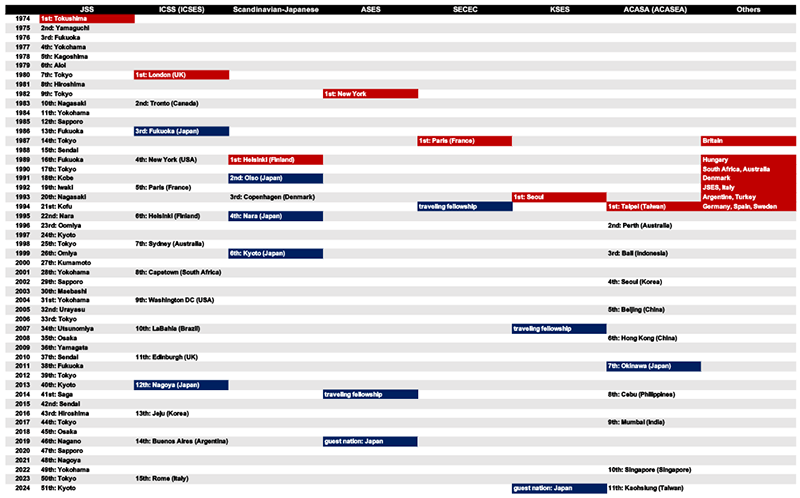Kiyohisa Ogawa, Noboru Matsumura
The relationship between the Japan Shoulder Society and international community, apart from individual interactions, began in 1978. In that year, five members in their 40s (Nagao Adachi, Hisao Endo, Katsuya Nobuhara, Hiroaki Fukuda, and Ryuji Yamamoto) and two bag-toting members in their 30s (Motohiko Mikasa and Kiyohisa Ogawa), who were not officially dispatched by the Japan Shoulder Society (then the “Shoulder Research Society”) but had played a leading role in the founding and development of the association with their strong personalities and natural energy, visited six major institutions in the United States. They visited six major institutions in the U.S. (Memphis, Rochester, Chicago, Philadelphia, New York, and Boston) and gave lectures while observing actual research and clinical practice (Figs. 1, 2 and 3). While I gained confidence in Japan's unique research achievements during this period, I also had a strong impression of the country's quantitative clinical inferiority. Many U.S. shoulder surgeons who helped me during this overseas expedition became invited speakers at the subsequent Japan Shoulder Society (Cofield and Calandruccio in 1979, Neer in 1984, and Post in 1987). International activities as academic organizations began with the 2nd ICSS in 1983. It was at this ICSS that the Japan Shoulder Society was internationally recognized as the world's first society specializing in the shoulder joint, and we succeeded in hosting the 3rd ICSS in Japan in 1986. In 1989, the 4th ICSS (New York) and the 1st Scandinavian-Japanese Shoulder Congress (Helsinki) were held, marking the beginning of active international exchange. This led to the establishment of a permanent International Committee in 1991 to serve as a window for international exchange by the Japan Shoulder Society. Furthermore, in 1992, a Japanese Editorial Board was formed as a window for the first issue of the Journal of Shoulder and Elbow Surgery (JSES), albeit irregularly, and Kosaku Mizuno was appointed editor-in-chief. The Japan Shoulder Society has had traveling fellowships with the SECEC since 1994, KSES since 2007, and ASES since 2014.
-
 Figure 1. Seven people who visited the U.S. in 1978 (front row, from left: Hisao Endo, Ryuji Yamamoto, Motohiko Mikasa; back row, from left: Katsuya Nobuhara; one person behind: Hiroaki Fukuda, Nagao Adachi, Kiyohisa Ogawa), in Boston.
Figure 1. Seven people who visited the U.S. in 1978 (front row, from left: Hisao Endo, Ryuji Yamamoto, Motohiko Mikasa; back row, from left: Katsuya Nobuhara; one person behind: Hiroaki Fukuda, Nagao Adachi, Kiyohisa Ogawa), in Boston.
-
 Figure 2. Dinner with Prof. Calandruccio at the Campbell Clinic, the first visiting location.
Figure 2. Dinner with Prof. Calandruccio at the Campbell Clinic, the first visiting location.
-
 Figure 3. Talking about joint arthroplasty with Prof. Neer at the last visiting location, New York.
Figure 3. Talking about joint arthroplasty with Prof. Neer at the last visiting location, New York.
ICSS (International Conference/Congress on Surgery of the Shoulder) / ICSES (International Congress of Shoulder and Elbow Surgery)
(Conferences until the 5th and Congresses since the 6th)
(ICSS until the 8th Congress and ICSES since the 9th Congress).
The ICSS was founded in 1980 in London, England, by Lipmann Kessel and Ian Bayley under the auspices of the University of London (Fig. 4). There were over 70 attendees, mainly from Europe and North America, with no attendees from Japan (Fig. 5). The meeting commemorated Ernest Amory Codman (1869-1940), hailed as the founder of modern shoulder surgery, with a pioneering lecture entitled "Codman - His influence on the development of shoulder surgery" by Carter R. Rowe. Among the faculty members in attendance were Carter R. Rowe and Anthony F. DePalma, who had first-hand experience with Codman's work (Figs. 6, 7 and 8). Kessel and Bayley stated that the outcome of the meeting was that ”We tried to gather together ‘everybody who was anybody’ in the world of shoulder surgery, and to a considerable extent we were successful beyond our most optimistic dream.” The proceedings were sold in Japan and served as an excellent research resource, as well as a reminder of the existence of an international society dedicated to shoulder surgery (Fig. 9).
-
 Figure 4. Chairman Lipman Kessel
Figure 4. Chairman Lipman Kessel
-
 Figure 5. Participating countries in the 1st ICSS
Figure 5. Participating countries in the 1st ICSS
-
 Figure 6. Ernest Amory Codman
Figure 6. Ernest Amory Codman
-
 Figure 7. Carter R. Rowe
Figure 7. Carter R. Rowe
-
 Figure 8. Anthony F. DePalma
Figure 8. Anthony F. DePalma
-
 Figure 9. Proceeding of the 1st ICSS
Figure 9. Proceeding of the 1st ICSS
The second meeting was held in Toronto, Canada, in 1983 under the presidency of James E. Bateman (Fig. 10). Approximately 200 people from 17 countries attended the meeting, including 30 from Japan (Fig. 11). Thirteen of the 65 presentations were from Japan, and the Codman Lecture was given by Lipmann Kessel on "The interface between medicine and surgery." Notably, prior to the meeting, Ian Bayley, Treasurer of the 1st ICSS, approached the “Shoulder Research Society” through Nobuyuki Ito (Nagasaki University), who was visiting the UK, about holding the 3rd ICSS in Japan (Figs. 12 and 13). Finally, it was decided that the 3rd ICSS would be held in Japan and the 4th ICSS in the U.S., with Naoto Takagishi (Fig. 14), a professor at Fukuoka University, as the president, and Robert L. Samilson (Fig. 15), a professor at the University of California, as the president.
-
 Figure 10. 2nd ICSS held in Toronto, Canada
Figure 10. 2nd ICSS held in Toronto, Canada
-
 Figure 11. Participating delegations from Japan
Figure 11. Participating delegations from Japan
-
 Figure 12. Ian Bayley
Figure 12. Ian Bayley
-
 Figure 13. Nobuyuki Ito
Figure 13. Nobuyuki Ito
-
 Figure 14. Naoto Takagishi talking with Chairman James E. Bateman
Figure 14. Naoto Takagishi talking with Chairman James E. Bateman
-
 Figure 15. Robert L. Samilson
Figure 15. Robert L. Samilson
The 3rd meeting was held in Fukuoka in 1986 under the leadership of President Naoto Takagishi, Vice President Ryuji Yamamoto, Secretary General Hiroaki Fukuda, and Treasurer Akio Matsuzaki, and was organized by the “Shoulder Research Society” as a combined meeting with the 13th “Shoulder Research Society” (Figs. 16, 17 and 18). Approximately 400 people from 23 countries attended the conference and 39 of the 90 abstracts were from Japan. (Many Japanese abstracts were accepted as posters.) Many young Japanese researchers made their ICSS debut at this meeting and were impressed and inspired by the research content and dignified lectures by the world authorities (Fig. 19). In this sense, it can be said that this conference contributed greatly to the development of shoulder joint research in Japan. The Codman Lecture was given by James E. Bateman on "The place of fascia lata in shoulder reconstruction." During this meeting, Robert L. Samilson, the president of the next meeting in the U.S., passed away in 1984, and the presidency was taken over by Charles S. Neer II, a professor at Columbia University, and the venue was changed from San Francisco to New York. It was also decided to hold a 5th meeting in Paris. From this meeting, national delegates were unofficially appointed by the organizers.
-
 Figure 16. 3rd ICSS held in Fukuoka
Figure 16. 3rd ICSS held in Fukuoka
-
 Figure 17. Three officers of the meeting (from left to right: Secretary General Fukuda, President Takagishi, and Vice President Yamamoto)
Figure 17. Three officers of the meeting (from left to right: Secretary General Fukuda, President Takagishi, and Vice President Yamamoto)
-
 Figure 18. Members of Fukuoka University who worked behind the scenes (the center is Treasurer Matsuzaki)
Figure 18. Members of Fukuoka University who worked behind the scenes (the center is Treasurer Matsuzaki)
-
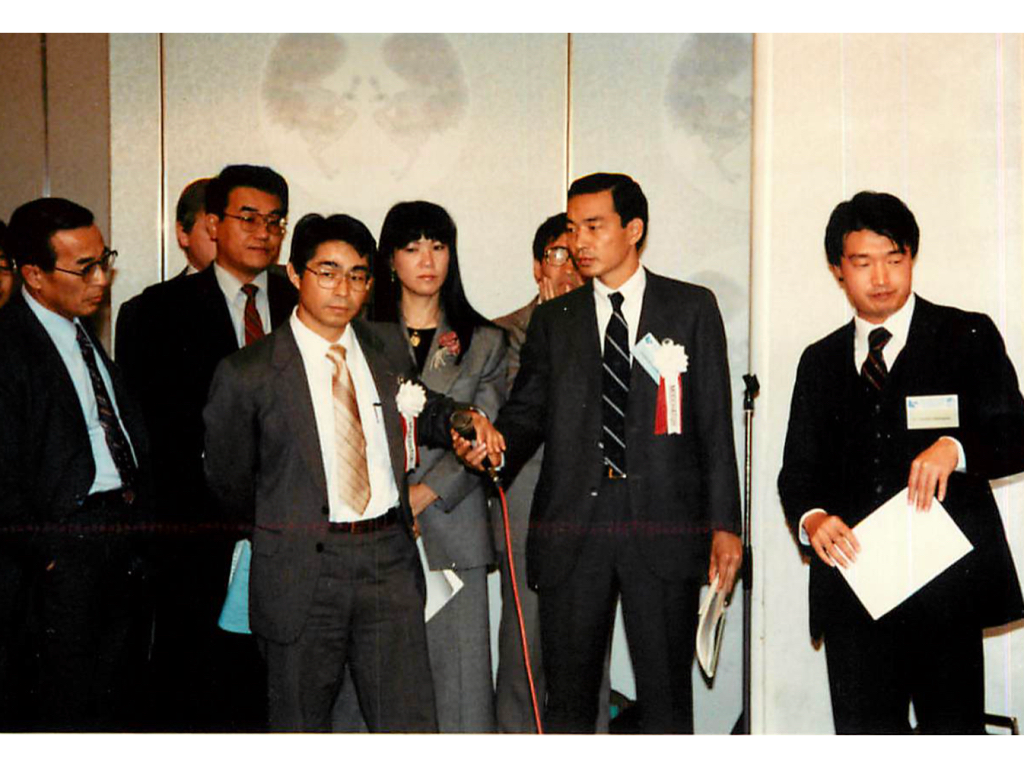 Figure 19. Young researchers of the time who were responsible for subsequent Japanese shoulder research
Figure 19. Young researchers of the time who were responsible for subsequent Japanese shoulder research
The 4th meeting was held in 1989, and under the strong leadership of President Neer, many participants from many countries attended (Figs. 20, 21 and 22). Eighteen out of these 135 presentations were from Japan. The venue was a prestigious but old hotel (Waldorf-Astoria), and speakers from Japan and Europe had a hard time during the Q&A session because they could not hear the questions from the podium; young researchers from the U.S. spoke too quickly and extensively rather than asking questions. The Codman Lecture was given by Naoto Takagishi on "The frozen shoulder in Japan. Shoulder Evaluation in Japan." It was then decided that the 6th meeting would be held in Finland. At this meeting, national delegates were unofficially appointed by the organizer and served as stepping stones for the next meeting.
-
 Figure 20. The 4th ICSS held in New York, U.S.A.
Figure 20. The 4th ICSS held in New York, U.S.A.
-
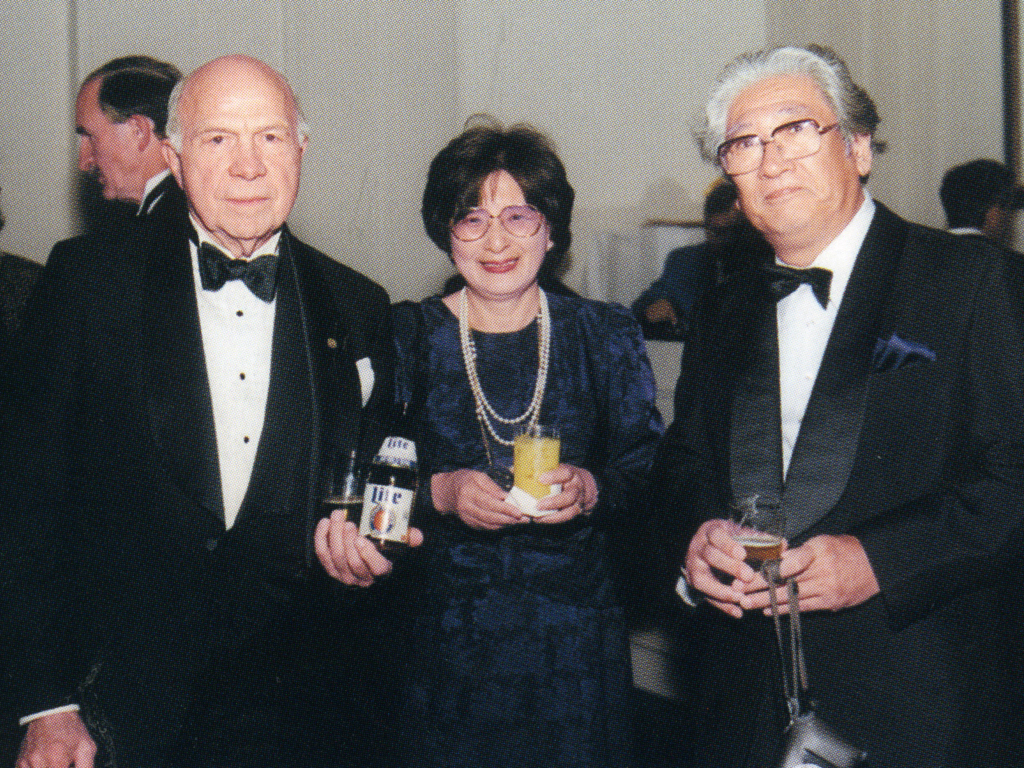 Figure 21. Chairman Neer and former Chairman and Codman Lecturer Takagishi (Mrs. Takagishi in the center)
Figure 21. Chairman Neer and former Chairman and Codman Lecturer Takagishi (Mrs. Takagishi in the center)
-
 Figure 22. Young students of Neer School chatting with each other. (from left to right: Ogawa, Neer, Takagishi, Morisawa)
Figure 22. Young students of Neer School chatting with each other. (from left to right: Ogawa, Neer, Takagishi, Morisawa)
The 5th Congress was held in Paris, France, in 1992, with Daniel Goutallier as President, following the death of Didier Patte in 1989 (Figs. 23-25 and 26). At this meeting, Charles S. Neer II proposed the organization of the ICSS, and its name was changed to the International Congress on Surgery of the Shoulder. The International Board of Shoulder Surgery (IBSS) was formed to make long-term plans with Neer as chairman and Hiroaki Fukuda as treasurer.
-
 Figure 23. 5th ICSS held in Paris, France
Figure 23. 5th ICSS held in Paris, France
-
 Figure 24. Didier Patte
Figure 24. Didier Patte
-
 Figure 25. Chairman Daniel Goutallier
Figure 25. Chairman Daniel Goutallier
-
 Figure 26. After the conference, an evening tour of Paris (in front of the Arc de Triomphe)
Figure 26. After the conference, an evening tour of Paris (in front of the Arc de Triomphe)
The 6th meeting was held in 1995 in Helsinki, Finland and Stockholm, Sweden, with Martti Vastamäki and Richard Wallensten as chairpersons (Figs. 27-29 and 30). International delegates were officially assigned to each region from this meeting.
-
 Figure 27. 6th ICSS held in Helsinki, Finland and Stockholm, Sweden
Figure 27. 6th ICSS held in Helsinki, Finland and Stockholm, Sweden
-
 Figure 28. Chairman Martti Vastamäki
Figure 28. Chairman Martti Vastamäki
-
 Figure 29. Chairman Richard Wallensten
Figure 29. Chairman Richard Wallensten
-
 Figure 30. Young mixed troops who went to the city for dinner the day before the conference.
Figure 30. Young mixed troops who went to the city for dinner the day before the conference.
The 7th meeting was held in Sydney, Australia in 1998, under the co-chairmanship of David Sonnabend and Desmond J. Bokor (Figs. 31 and 32). Hiroaki Fukuda gave the Codman Lecture, "Partial thickness rotator cuff tears - a modern view on Codman's classic." Robert H. Cofield replaced him as the IBSS Chairman (Figs. 33 and 34).
-
 Figure 31. 7th ICSS held in Sydney, Australia
Figure 31. 7th ICSS held in Sydney, Australia
-
 Figure 32. Chairman David Sonnabend
Figure 32. Chairman David Sonnabend
-
 Figure 33. A gathering of important members of the society (from left to right: Mansat, Sonnabend, Cofield, Bokor, and Hiroaki Fukuda).
Figure 33. A gathering of important members of the society (from left to right: Mansat, Sonnabend, Cofield, Bokor, and Hiroaki Fukuda).
-
 Figure 34. Conferences are always delicious.
Figure 34. Conferences are always delicious.
The 8th meeting was held in Cape Town, South Africa, in 2001, under the presidency of Donald B. Mackenzie, with over 700 participants from 49 countries (Figs. 35, 36 and 37). The Codman Lecture was given by Michel F. Monsat entitled “The challenge of shoulder arthroplasty -End results and new perspectives." From this meeting, the number of international delegates per region was determined, and IBSS directors were elected based on international delegates.
-
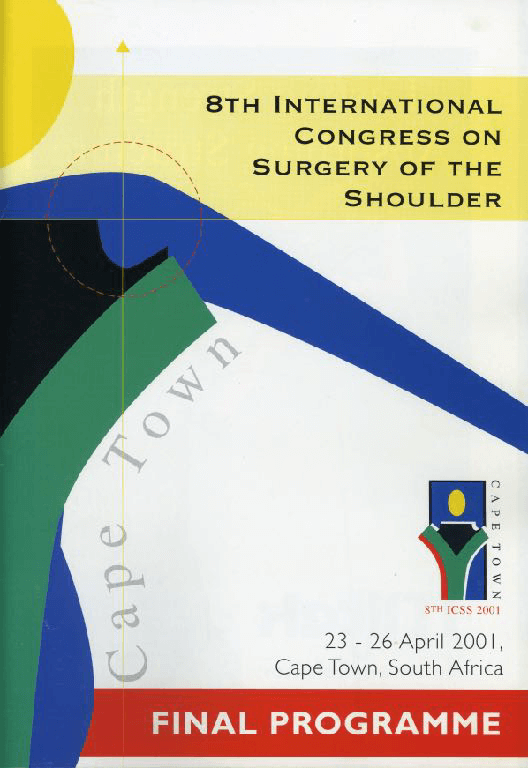 Figure 35. The 8th ICSS held in Cape Town, South Africa
Figure 35. The 8th ICSS held in Cape Town, South Africa
-
 Figure 36. Chairman Donald B. Mackenzie
Figure 36. Chairman Donald B. Mackenzie
-
 Figure 37. Front view of the venue with the Table mountains in the background.
Figure 37. Front view of the venue with the Table mountains in the background.
The 9th IBSS was held in 2004 in Washington, DC, U.S., under the presidency of Robert H. Cofield, with 587 participants (Figs. 38, 39 and 40). Although the number of abstracts related to the elbow has been gradually increasing, the elbow was officially included in the scope of this meeting. Therefore, the name of the Congress was changed to the International Congress of Shoulder and Elbow Surgery (ICSES), and the name of the board was changed to the International Board of Shoulder and Elbow Surgery (IBSES), and ICSET (Congress for Therapists) was added. Stephen Copeland became IBSES Chairman, and Eiji Itoi became Treasurer. The Codman Lecture was given by David Sonnabend on "The origin of the shoulder: A fairytale based on fact." Prior to this meeting in 2003, Robert H. Cofield, then president and chairman of the IBSS, invited Japan to host a meeting in the near future. In response, the Japan Shoulder Society decided to host the conference in 2013, with Eiji Itoi and Kenji Takagishi as presidential candidates, and presented it at an international delegate meeting to demonstrate their candidacy. The Japanese presentation was excellent. Although it was unable to overturn the international decision to host the conference in the UK in 2010, it effectively confirmed Japan's candidacy in 2013 (Figs. 41 and 42).
-
 Figure 38. 9th ICSES held in Washington DC, USA
Figure 38. 9th ICSES held in Washington DC, USA
-
 Figure 39. Chairman Robert H. Cofield
Figure 39. Chairman Robert H. Cofield
-
 Figure 40. Old and new leaders from Europe and the U.S. at the Opening Symposium (from left to right: Gerber, Neer, Walch)
Figure 40. Old and new leaders from Europe and the U.S. at the Opening Symposium (from left to right: Gerber, Neer, Walch)
-
 Figures 41, 42. At the Delegates Meeting, Japan's position was introduced with humor, comparing hamburger restaurants and the number of JSES publications.
Figures 41, 42. At the Delegates Meeting, Japan's position was introduced with humor, comparing hamburger restaurants and the number of JSES publications.
The 10th meeting was held in LaBahia, Brazil, in 2007, under the co-chairmanship of Sergio Checchia and Osvandre Lech, with 1104 participants (Figs. 43, 44 and 45). The main venue was named the Auditorium HIROAKI FUKUDA in honor of Hiroaki Fukuda, who was absent from the meeting because of illness. The Codman Lecture was given by Louis U. Bigliani on "The subacromial space: The shoulder’s unique anatomy. Past, Present, and Future. At this meeting, it was officially decided to hold a conference in Japan in 2013 (Fig. 46).
-
 Figure 43. 10th ICSES held in LaBahia, Brazil
Figure 43. 10th ICSES held in LaBahia, Brazil
-
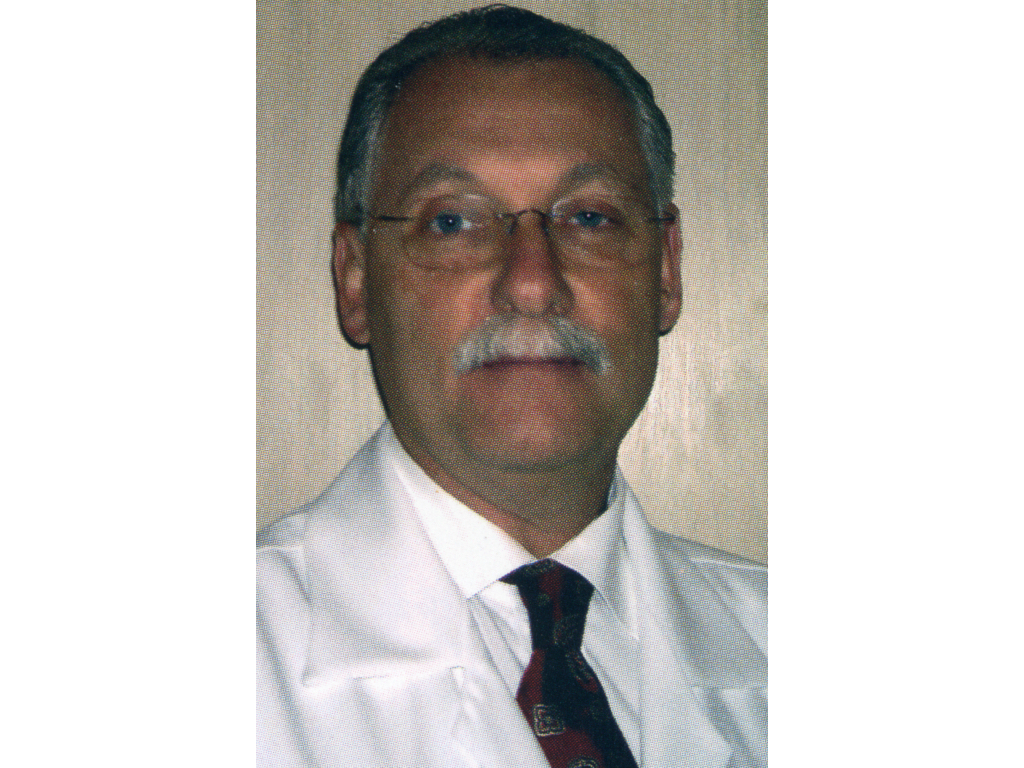 Figure 44. Chairman Sergio Checchia
Figure 44. Chairman Sergio Checchia
-
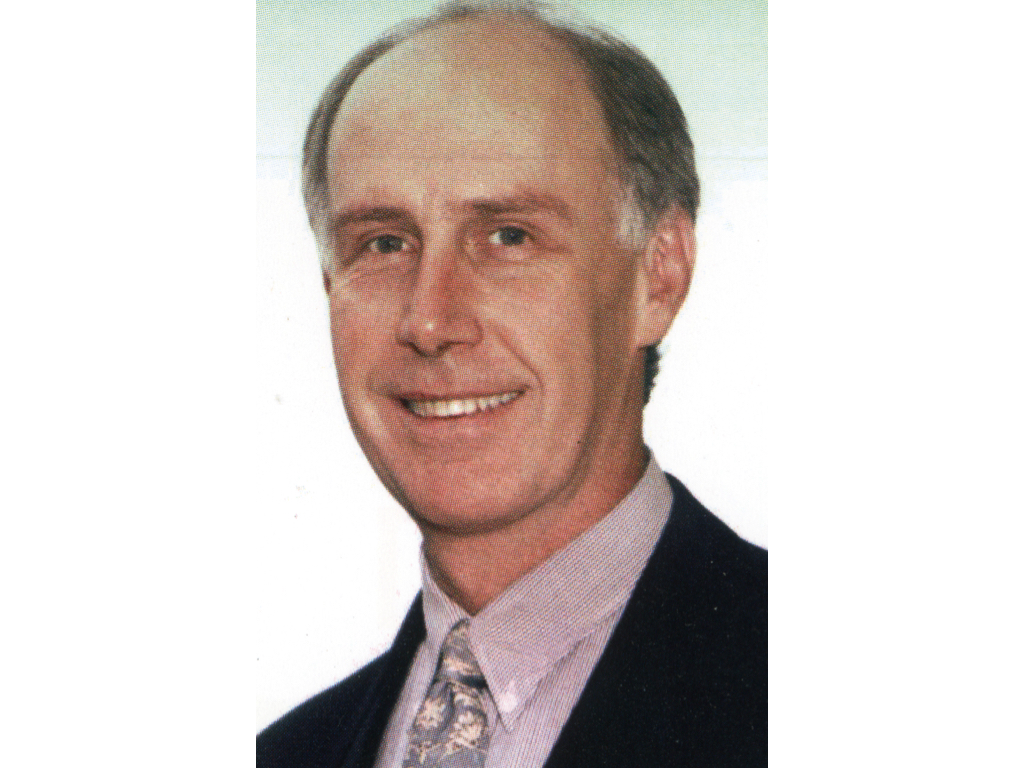 Figure 45. Chairman Osvandre Lech
Figure 45. Chairman Osvandre Lech
-
 Figure 46. Final solicitation at the entrance of the delegate meeting
Figure 46. Final solicitation at the entrance of the delegate meeting
The 11th meeting was held in Edinburgh, England, in 2010, with W. Angus Wallace as the sole president due to the death of Ian Kelly, who was scheduled to co-preside (Figs. 47 and 48). The Codman Lecture was given by Herbert Resch on " Proximal humeral fractures: Current controversies." Louis U. Bigliani was appointed Chairman of the IBSES. Kenji Takagishi joined the IBSES as an ex-officio member after the meeting.
-
 Figure 47. 11th ICSES held in Edinburgh, UK
Figure 47. 11th ICSES held in Edinburgh, UK
-
 Figure 48. Chairman W. Angus Wallace
Figure 48. Chairman W. Angus Wallace
The 12th meeting was held in Japan in 2013 in Nagoya with 1,150 participants from 48 countries under the leadership of Eiji Itoi and Kenji Takagishi, Co-Chairs, Hiroaki Tsutsui, Secretary-General, and Kazuya Tamai, Treasurer (Figs. 49, 50 and 51). The conference was originally scheduled to be held in Kyoto in December; however, following the Great East Japan Earthquake of 2011, the Kyoto International Conference Center became unusable because of earthquake-resistant construction, and the conference was rescheduled for the Nagoya International Conference Center in April. Naoki Suenaga joined IBSES as a board member at this meeting. The Codman Lecture was given by Robert H. Cofield on "The unending result." The conference was made possible by the long-term support of the invitation, preparatory, and executive committees, including Honorary Members Katsuya Nobuhara, Kosaku Mizuno, and Katsumasa Takagi of the Japan Shoulder Society (Fig. 52). Fifty abstracts, including some on the elbow joints, were accepted as oral presentations from Japan, and many Japanese physicians gave presentations at conferences. The significance and evaluation of this meeting, as well as the 3rd ICSS, will be determined by whether it provides an opportunity to promote the development of shoulder joint research in Japan and encourage research, especially by young members.
-
 Figure 49. 12th ICSES held in Nagoya
Figure 49. 12th ICSES held in Nagoya
-
 Figure 50. Leaders of the society (from left to right: Yamamoto, Secretary General of the Japan Shoulder Society; Tamai, Treasurer; Takagishi and Itoi, Co-Presidents; Tsutsui, Secretary General)
Figure 50. Leaders of the society (from left to right: Yamamoto, Secretary General of the Japan Shoulder Society; Tamai, Treasurer; Takagishi and Itoi, Co-Presidents; Tsutsui, Secretary General)
-
 Figure 51. The wide range of participating countries shows that the world of shoulder surgery has expanded from the so-called developed countries to the developing countries when compared to the first meeting.
Figure 51. The wide range of participating countries shows that the world of shoulder surgery has expanded from the so-called developed countries to the developing countries when compared to the first meeting.
-
 Figure 52. Executive Committee Members
Figure 52. Executive Committee Members
The 13th meeting was held in Jeju, Korea, in May 2016, with Yong-Girl Rhee as President (Figs. 53, 54 and 55). The Codman Lecture was given by W. Angus Wallace on "Our legacy to future patients -The best training for the next generation of shoulder and elbow surgeons." Eiji Itoi gave a Kessel Lecture on "Shoulder instability." Osvandre Lech was appointed the chairman of the IBSES after the meeting.
-
 Figure 53. 13th ICSES held in Jeju, Korea
Figure 53. 13th ICSES held in Jeju, Korea
-
 Figure 54. Chairman Yong-Girl Rhee (left)
Figure 54. Chairman Yong-Girl Rhee (left)
-
 Figure 55. At the 13th ICSES
Figure 55. At the 13th ICSES
The 14th meeting was held in Buenos Aires, Argentina, in 2019, with Gastón Maignon and Daniel Moya as co-chairs (Figs. 56-58 and 59). Although the conference was held in Argentina, on the opposite side of the globe from Japan, more than 40 Japanese Shoulder Society members attended, indicating the presence of the Japan Shoulder Society (Fig. 60). The Codman Lecture was given by Stephen S. Burkhart on "Shoulder arthroscopy: A bridge from the past to the future." The 16th ICSES was decided to be held in Vancouver, Canada.
-
 Figure 56. 14th ICSES held in Buenos Aires, Argentina
Figure 56. 14th ICSES held in Buenos Aires, Argentina
-
 Figure 57. Chairman Gastón Maignon
Figure 57. Chairman Gastón Maignon
-
 Figure 58. President Daniel Moya (second from left) and Stephen S. Burkhart (third from left) presenting the Codman Lecture
Figure 58. President Daniel Moya (second from left) and Stephen S. Burkhart (third from left) presenting the Codman Lecture
-
 Figure 59. For the first time, the presidents of the national shoulder societies gathered at this meeting to discuss the current status and future of their countries.
Figure 59. For the first time, the presidents of the national shoulder societies gathered at this meeting to discuss the current status and future of their countries.
-
 Figure 60. 14th ICSES Gala dinner
Figure 60. 14th ICSES Gala dinner
The 15th ICSES was held in Rome, Italy in 2023, with Stefano Gumina and Alessandro Castagna as co-chairs (Figs. 61 and 62). The ICSES is held every three years and was originally scheduled to take place in 2022, but was postponed by one year due to an unprecedented outbreak of new coronavirus infections beginning in 2020. The Codman Lecture was given by Pascal Boileau on "Past, present & future of shoulder arthroplasty. My 30-year odyssey through shoulder replacement.” Kenji Takagishi was honored as one of the pioneers in shoulder and elbow surgery (Fig. 63). The IBSES board was renewed with Joseph P. Iannotti as the sixth chairman and Hiroyuki Sugaya as a board member from Japan, replacing Naoki Suenaga. At this meeting, it was decided that the 17th ICSES would be held in Cairo, Egypt.
Looking at the Japanese active in the ICSS (ICSES) and IBSS (IBSES) over time, we can see Naoto Takagishi in the early years, Hiroaki Fukuda in the middle years, and Eiji Itoi in the later years (Figs. 64, 65 and 66). Needless to say, it was the academic achievements and steady activities of the members of the Japan Shoulder Society at that time that made these activities possible.
-
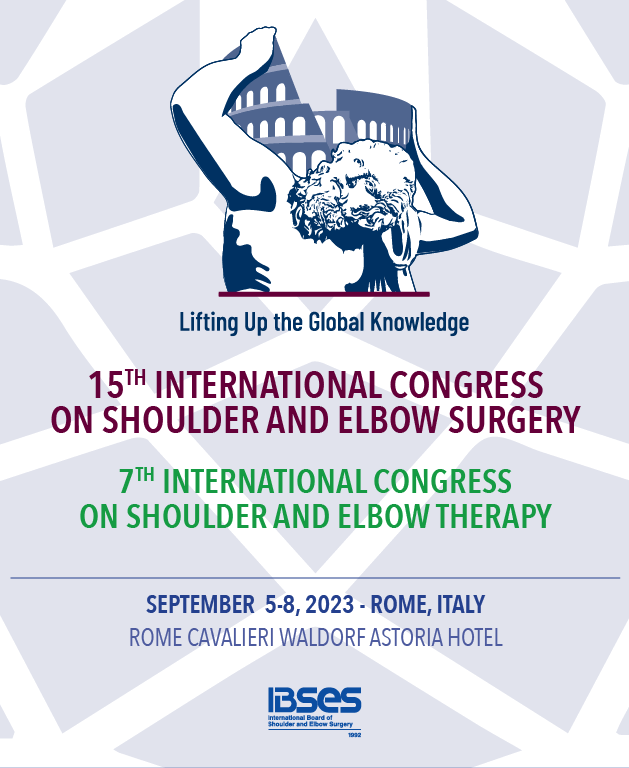 Figure 61. 15th ICSES held in Roma, Italy
Figure 61. 15th ICSES held in Roma, Italy
-
 Figure 62. From left, George S. Athwal, president of the upcoming 16th ICSES, Alessandro Castagna, president, and Stefano Gumina, president
Figure 62. From left, George S. Athwal, president of the upcoming 16th ICSES, Alessandro Castagna, president, and Stefano Gumina, president
-
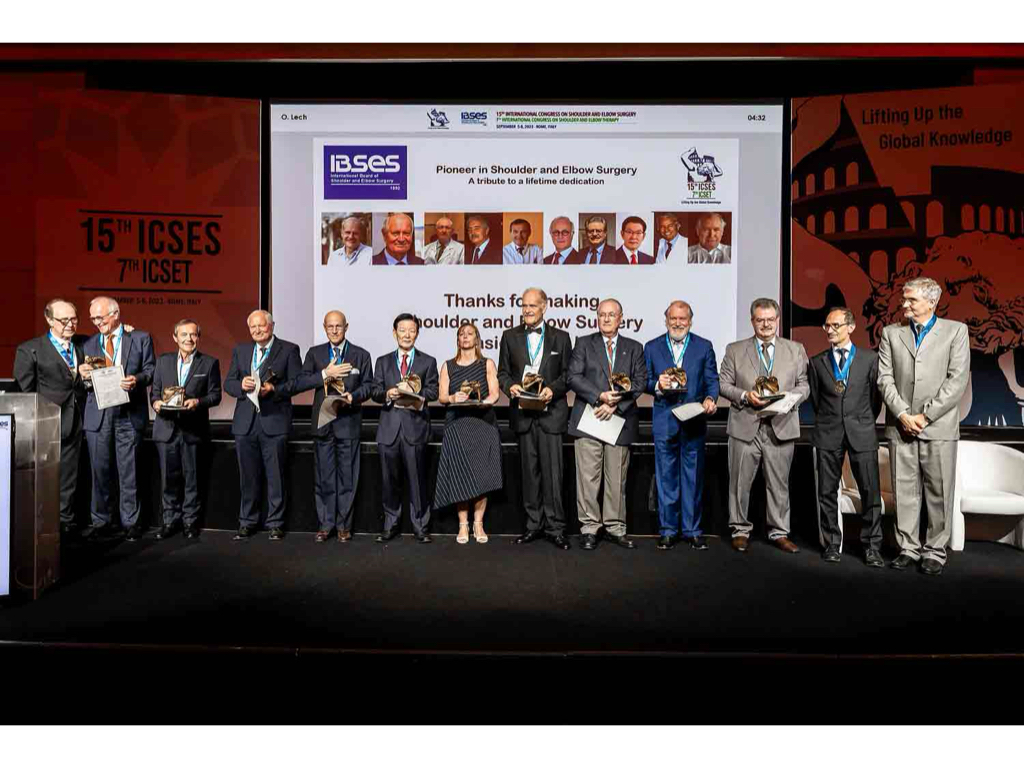 Figure 63. Kenji Takagishi was honored as one of the Pioneer in Shoulder and Elbow Surgery
Figure 63. Kenji Takagishi was honored as one of the Pioneer in Shoulder and Elbow Surgery
-
 Figures 64, 65, 66. Japanese actives in ICSS (ICSES) and IBSS (IBSES) (Naoto Takagishi, Hiroaki Fukuda, Eiji Itoi)
Figures 64, 65, 66. Japanese actives in ICSS (ICSES) and IBSS (IBSES) (Naoto Takagishi, Hiroaki Fukuda, Eiji Itoi)
JSES (Journal of Shoulder and Elbow Surgery)
At the 4th ICSS (New York) in 1989, with the strong leadership of Charles S. Neer II and the support of the ASES (Melvin Post was the president at the time), a plan was made to launch a journal dedicated to shoulder and elbow surgery to promote the exchange of shoulder knowledge worldwide (Figs. 67 and 68). The first step in the preparation was the formation of the Founding Board of Trustees (Neer, Bigliani, Post, Matsen, Rockwood, and Cofield) in 1990, followed by the establishment of the board of trustees (Neer, Bigliani, Post, Matsen, Rockwood, and Cofield) in 1991. Non-US trustees, including Kosaku Mizuno and Otto Sneppen, were also formed, and Charles S. Neer II was appointed Chairman of the Board of Trustees. In the same year, the International Editorial Board was formed with 16 members (Kosaku Mizuno was the only Japanese member) and Robert H. Cofield was appointed editor-in-chief (Fig. 69).
The Councilors and Editor-in-Chief held monthly conference calls to work out details such as the number of manuscripts to be received and the peer-review process, leading to the first issue in 1992. As one of six regions (North America, Europe, Brazil, Australia, South Africa, and Japan), the Japan Shoulder Society and ASES were the only professional shoulder and elbow societies, and Japan was granted the right to review papers independently. In 1991, Kosaku Mizuno, who had been involved in negotiations as president of the 18th Japan Shoulder Society since the planning of the first issue, was appointed as the first Japanese Editor. Associate Editors were from the first generation of the society (Hiroaki Fukuda, Minoru Sakurai, Katsuya Nobuhara, Ryuji Yamamoto, Fumio Kato, Mitsuru Takeshita, and Akio Matsuzaki; Matsuzaki was replaced by Yozo Shibata in 1995), but it was not established as a regular society committee (Fig. 70). Originally, papers that had been peer-reviewed by each region were to be reviewed by the International Editorial Board; however, in 1993, Robert H. Cofield, Editor-in-Chief at the time, proposed to the Board of Trustees that papers from Japan should be accepted without re-review (Fig. 71). Mizuno recalled that this was the result of the efforts of the members who enthusiastically reviewed papers at the time. (Mizuno received commendations from the Board of Trustees in 1996 and 2000 for his contributions.)
-
 Figure 67. Charles S. Neer II, the first Chair of the Council, was instrumental in the creation of the first issue.
Figure 67. Charles S. Neer II, the first Chair of the Council, was instrumental in the creation of the first issue.
-
 Figure 68. Melvin Post, then ASES President
Figure 68. Melvin Post, then ASES President
-
 Figure 69. Kosaku Mizuno, the first Japanese editor
Figure 69. Kosaku Mizuno, the first Japanese editor
-
 Figure 70. First editorial structure and Japanese editors
Figure 70. First editorial structure and Japanese editors
-
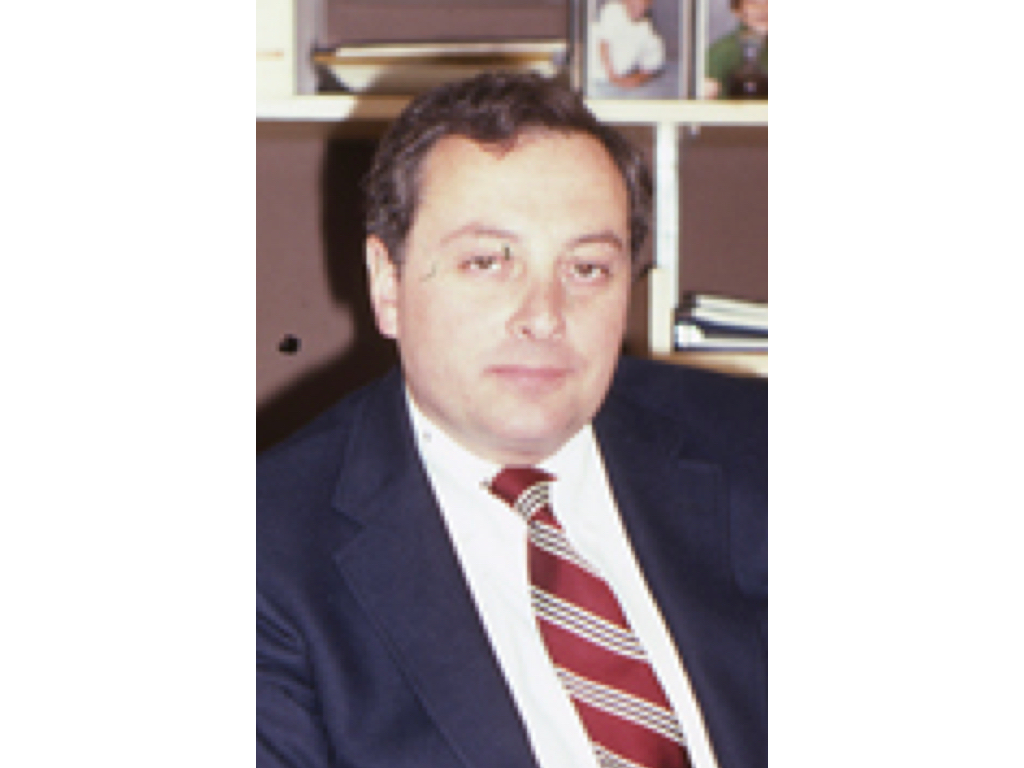 Figure 71. Robert H. Cofield, first Editor-in-Chief
Figure 71. Robert H. Cofield, first Editor-in-Chief
In 1994, the council was replaced by Otto Sneppen (Fig. 72); in 1997, it was replaced by Robert H. Cofield (with Kosaku Mizuno and Norbert Gschwend as councilors outside the U.S.); and the Editor-in-Chief was replaced by Robert J. Neviaser (Fig. 73). In Japan, the committee was newly established in 1999 as an official committee within the Japan Shoulder Society, and the editorial staff was greatly rejuvenated (Kosaku Mizuno, Kenji Takagishi, Kiyohisa Ogawa, Kimitaka Fukuda, Teruhiko Nakagawa, and later Kazuya Tamai and Toshihiko Ogino joined). The following year, Kenji Takagishi replaced the council and the editor-in-chief in 2000. Councilors outside the U.S. were Kenji Takagishi and Michel F. Mansat) (Figs. 74 and 75).
-
 Figure 72. Otto Sneppen, 2nd Council Chair
Figure 72. Otto Sneppen, 2nd Council Chair
-
 Figure 73. Robert J. Neviaser, 2nd Editor-in-Chief
Figure 73. Robert J. Neviaser, 2nd Editor-in-Chief
-
 Figure 74. Kenji Takagishi, 2nd Japanese editor
Figure 74. Kenji Takagishi, 2nd Japanese editor
-
 Figure 75. Second Japanese editors
Figure 75. Second Japanese editors
In 2005, the Council Chair was replaced by Louis U. Bigliani, Bernard F. Morrey in 2007, and Joseph P. Iannotti in 2010. In 2009, William J. Mallon replaced the editor-in-chief, and editorial and peer review policies changed significantly. The right to review and choose reviewers, which had been left to each region, was eliminated, and peer review was changed to the editor-in-chief and a panel of editors selected by the council (Fig. 76). In 2013, Evan L. Flatow was replaced as the Council Chair, and the councilor from Japan was Eiji Itoi (Fig. 77). Currently, Eiji Itoi serves as the Deputy International Editor, and Shinji Imai serves as the Board of Trustees and as Assistant Editor. Noboru Matsumura, Kotaro Yamakado, and Hiroyuki Sugaya are Associate Editors of JSES International; Seminars in Arthroplasty: JSES; and JSES Reviews, Reports, and Techniques, which are sister journals of JSES.
From their inception to the present, the quality of articles has improved owing to changes in various editorial policies, peer review methods, publication frequency, and the use of electronic publications. As a result, the impact factor increased from 0.67 in 1999 to 2.289 in 2014 and 3.507 in 2021. On the other hand, regardless of region, the editorial staff composition, which is mainly composed of those who have studied in the U.S., and U.S.-centric editorial policy has resulted in a lack of fine-grained and original European- and Japanese-style articles, and the number of straightforward American-style articles has increased. The first half of History, or JSES, features Kosaku Mizuno, and the second half features Kenji Takagishi and Eiji Itoi.
-
 Figure 76. William J. Mallon, 3rd Editor-in-Chief
Figure 76. William J. Mallon, 3rd Editor-in-Chief
-
 Figure 77. Eiji Itoi, the 3rd Japanese editor
Figure 77. Eiji Itoi, the 3rd Japanese editor
ASES (American Shoulder and Elbow Surgeons)
It was founded in 1982 with Neer as the president, and its first (founding) meeting was held in New York (Plaza Hotel) (Fig. 78). It was the second academic society specializing in the shoulder joint, after the Japan Shoulder Society in 1974 (“Shoulder Research Society” at that time). Along with the founders, Hiroaki Fukuda was the first and only corresponding member to attend the meeting. Since 1985, open meetings have been held annually, in addition to closed meetings. The number of members of the closed meeting is currently 1379, and 21 of the corresponding members who are basically invited are Japanese.
The relationship between academic societies started late, with Tadanao Funakoshi and Nobuyuki Yamamoto being sent as traveling fellows in 2014, and eight members have been sent to date (Figs. 79 and 80). First, it was a one-way exchange with two people dispatched once every two years; however, in September 2022, we accepted traveling fellows from ASES for the first time as an Asian Exchange fellowship, and Lewis L. Shi and Stephanie Muh visited Japan and toured many facilities.
In October 2019, Frank A. Cordasco hosted the 38th Annual Meeting and Japan was selected as the guest nation for the ASES, with 13 Japanese Shoulder Society members participating (Fig. 81). At the meeting, Eiji Itoi delivered the Charles S. Neer II Lecture, "Revival and renewal," and Hiroyuki Sugaya delivered the Guest Nation Lecture, "Evolving concept for shoulder stabilization: roles of bone, capsule, and rotator cuff.
-
 Figure 78. Group photo of the first ASES meeting (the fourth person from the right in the back row is the only corresponding member, Hiroaki Fukuda)
Figure 78. Group photo of the first ASES meeting (the fourth person from the right in the back row is the only corresponding member, Hiroaki Fukuda)
-
 Figure 79. With Tibone (second from right) during the first ASES exchange program in 2014 (Tadanao Funakoshi and Nobuyuki Yamamoto)
Figure 79. With Tibone (second from right) during the first ASES exchange program in 2014 (Tadanao Funakoshi and Nobuyuki Yamamoto)
-
 Figure 80. With Dine (far left) and Cordasco (far right) during the ASES exchange program in 2018 (Noboru Matsumura and Atsushi Urita)
Figure 80. With Dine (far left) and Cordasco (far right) during the ASES exchange program in 2018 (Noboru Matsumura and Atsushi Urita)
-
 Figure 81. Japan was the guest nation at the 38th Annual Meeting
Figure 81. Japan was the guest nation at the 38th Annual Meeting
SECEC (European Society for Surgery of the Shoulder and the Elbow)
It was founded in 1987 by Didier Patte and Norbert Gschwend (Figs. 82 and 83). It currently has just under 1,000 members, four of whom are Japanese.
In 1992, SECEC started a traveling fellowship between the U.S. and Europe. Two years later, in 1994, a Japan-Europe traveling fellowship was established, and Eiji Itoi was sent as the first exchange fellow. The inauguration of this program was largely due to the efforts of Otto Sneppen of Denmark, who served as president of the 3rd Scandinavian-Japanese Shoulder Congress and the 7th SECEC in 1993, and the negotiating skills of then-President Nobuyuki Ito and Hiroaki Fukuda. 3M provided $5,000 annually for the first three years of the program, after which the program was funded by the SECEC and the Japan Shoulder Society. Initially, there was one fellow each year (Figs. 84 and 85); however, this number increased to two in 2004 (Fig. 86 and 87). However, since 2012, the program has been renamed the Asia-Europe Exchange Program, and the number of students from Japan has once again been reduced to one (Fig. 88). Nineteen members of society have been dispatched so far, and those who have studied abroad with SECEC form the core of the current Japan Shoulder Society; the exchange program has become a foothold for their international activities.
Eiji Itoi delivered the Guest Lecture "Japan Shoulder Surgery; Past, present, and future" at the 2011 Annual Meeting (Fig. 89). In the 2012 25th anniversary commemorative journal, the President of the Japan Shoulder Society, Teruhiko Nakagawa, declared SECEC as a sister society, indicating a close relationship between the two societies (Fig. 90).
-
 Figure 82. Didier Patte, founder of SCEC
Figure 82. Didier Patte, founder of SCEC
-
 Figure 83. Norbert Gschwend
Figure 83. Norbert Gschwend
-
 Figure 84. Eiji Itoi with Randelli (far right) in Milano, Italy, during the first traveling fellowship to Europe.
Figure 84. Eiji Itoi with Randelli (far right) in Milano, Italy, during the first traveling fellowship to Europe.
-
 Figure 85. With Söjbjerg (left) at Aarhus, Denmark, during the 2nd traveling fellowship to Europe (Yozo Shibata)
Figure 85. With Söjbjerg (left) at Aarhus, Denmark, during the 2nd traveling fellowship to Europe (Yozo Shibata)
-
 Figure 86. -------------------------------------------
Figure 86. -------------------------------------------
-
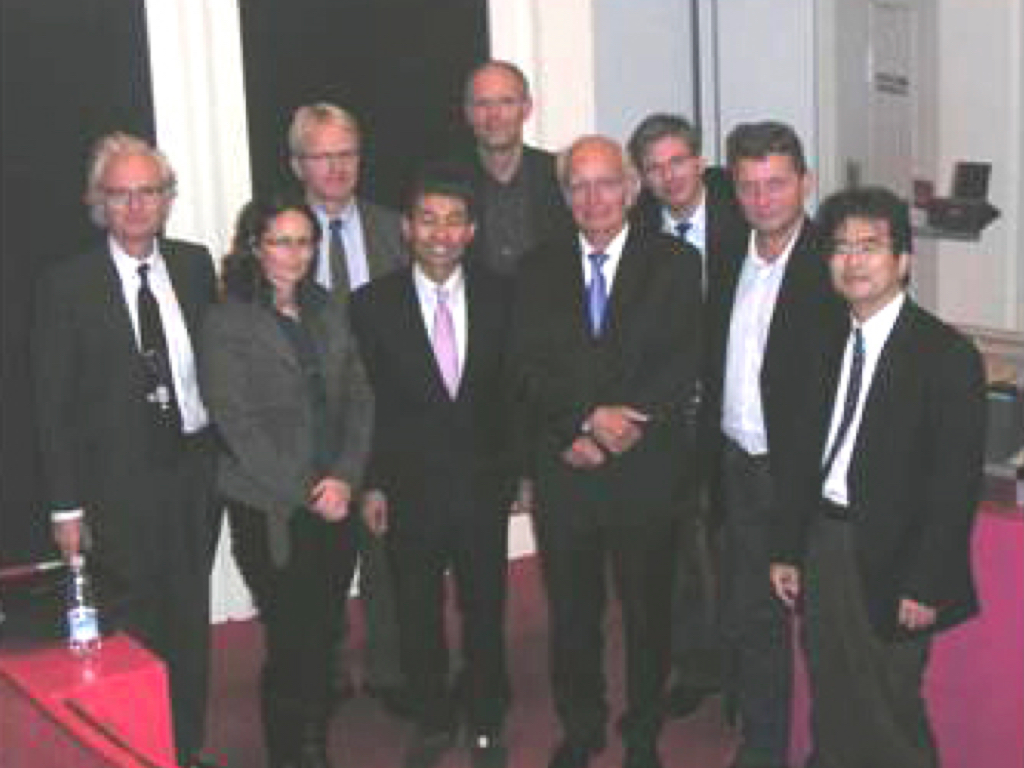 Figure 87. Group photo with executives of the Danish Shoulder and Elbow Society in Copenhagen, Denmark, during the 8th traveling fellowship to Europe (Hideyuki Goto and Katsumi Takase)
Figure 87. Group photo with executives of the Danish Shoulder and Elbow Society in Copenhagen, Denmark, during the 8th traveling fellowship to Europe (Hideyuki Goto and Katsumi Takase)
-
 Figure 88. Teruhisa Mihata receives a certificate of appreciation with Jin-Yong Park of Korea at the SECEC venue, one each from Korea and Japan from the 10th traveling fellowship to Europe.
Figure 88. Teruhisa Mihata receives a certificate of appreciation with Jin-Yong Park of Korea at the SECEC venue, one each from Korea and Japan from the 10th traveling fellowship to Europe.
-
 Figure 89. Eiji Itoi receives a certificate of appreciation from President Walch after delivering the Guest Lecture at the 2011 Annual Meeting.
Figure 89. Eiji Itoi receives a certificate of appreciation from President Walch after delivering the Guest Lecture at the 2011 Annual Meeting.
-
 Figure 90. Congratulatory letter sent by Teruhiko Nakagawa, then president of Japan Shoulder Society Meeting, to SECEC's 25th anniversary
Figure 90. Congratulatory letter sent by Teruhiko Nakagawa, then president of Japan Shoulder Society Meeting, to SECEC's 25th anniversary
Scandinavian-Japanese Shoulder Congress
Martti Vastamäki and Pekka Paavolainen from Finland attended the 3rd ICSS in Fukuoka in 1986, and the 14th “Shoulder Research Society” (chaired by Motohiko Mikasa), in following year, 1987, and it was the beginning of intensive exchange with Japan. This led to the first meeting in Helsinki in 1989, with the enthusiastic invitation of Martti Vastamäki under the chairmanship (Figs. 91, 92 and 93). A simultaneous interpretation in Japanese was provided for this meeting to invite many participants from Japan; however, the interpreter could not interpret the second Japanese speaker at all and left the booth. Despite this accident, the meeting ended in an amicable atmosphere from beginning to end without a hitch.
-
 Figure 91. Oral presentation at the first conference (Chairperson: Dr. Vastamäki, President; Speaker: Nobuyuki Ito)
Figure 91. Oral presentation at the first conference (Chairperson: Dr. Vastamäki, President; Speaker: Nobuyuki Ito)
-
 Figure 92. View of the venue for the first meeting
Figure 92. View of the venue for the first meeting
-
 Figure 93. Travel group with Ryohei Suzuki, secretary (fourth from left) after the first conference
Figure 93. Travel group with Ryohei Suzuki, secretary (fourth from left) after the first conference
The second meeting was held in Oiso in 1991, under the presidency of Hiroaki Fukuda (Figs. 94 and 95). With the goal of running a handmade conference, the young secretaries of the Japan Shoulder Society voluntarily worked behind scenes, bagging materials, driving cars, etc..
The third meeting was held in 1993 in Aarhus, Denmark with Otto Sneppen as the chairman. Jens Ole Söjbjerg, who served as secretary general, has been of great help not only at this meeting but also since then (Figs. 96-98 and 99).
The 4th meeting was held in Nara in 1995, under the presidency of Ryuji Yamamoto, following the Japan Shoulder Society Annual Meeting. The conference had a rich international flavor, with participants from many Asian countries (Fig. 100).
In 1997, the 5th meeting was scheduled to be held in Iceland, but was cancelled due to the country's unprecedented economic collapse (Fig. 101).
The 6th meeting was held in Kyoto in 1999 under the presidency of Jiro Ozaki, in conjunction with the International Symposium and Practical Course on Shoulder Surgery (Fig. 102).
With the development of other international shoulder conferences and the diminishing significance of inter-regional exchanges in a small area, the 6th conference ended its short life. However, since the conference was held in Scandinavia, a region that we did not have many opportunities to visit, we organized travel groups before and after the conference to deepen mutual friendships among Japanese participants, regardless of their parent organizations. The average age of the attendees was young, with only one or two participants from each organization; therefore, the group enjoyed strolling around the city and dining together, which became a pleasant memory. Many members of the Japan Shoulder Society made their academic debuts at this meeting, which served as a prelude to a full-fledged international conference.
-
 Figure 94. Chairman and Mrs. Hiroaki Fukuda and Craig at the 2nd meeting
Figure 94. Chairman and Mrs. Hiroaki Fukuda and Craig at the 2nd meeting
-
 Figure 95. American and European giants (Neer and Sneppen)
Figure 95. American and European giants (Neer and Sneppen)
-
 Figure 96. Bosses at the 3rd Annual President's Banquet (front row, far left: Ryuji Yamamoto, second from right: Neer, back row, from left: Katsuya Nobuhara, Hiroaki Fukuda, far right: Chairman Sneppen).
Figure 96. Bosses at the 3rd Annual President's Banquet (front row, far left: Ryuji Yamamoto, second from right: Neer, back row, from left: Katsuya Nobuhara, Hiroaki Fukuda, far right: Chairman Sneppen).
-
 Figure 97. A gathering of mid-careers (Söjbjerg in the back row, far left, Walch in the sixth position)
Figure 97. A gathering of mid-careers (Söjbjerg in the back row, far left, Walch in the sixth position)
-
 Figure 98. Travel group including Nobuhara, Yamamoto, Adachi, and Morioka who visited Copenhagen before the 3rd meeting
Figure 98. Travel group including Nobuhara, Yamamoto, Adachi, and Morioka who visited Copenhagen before the 3rd meeting
-
 Figure 99. Visit to Amsterdam after the 3rd meeting
Figure 99. Visit to Amsterdam after the 3rd meeting
-
 Figure 100. Ryuji Yamamoto, 4th Chairman, addressing the audience at the venue (Noh Theater)
Figure 100. Ryuji Yamamoto, 4th Chairman, addressing the audience at the venue (Noh Theater)
-
 Figure 101. Canceled Iceland Notice of Held
Figure 101. Canceled Iceland Notice of Held
-
 Figure 102. Dignitaries from various countries who participated in the 6th meeting (front row center is Chairman Jiro Ozaki)
Figure 102. Dignitaries from various countries who participated in the 6th meeting (front row center is Chairman Jiro Ozaki)
KSES (The Korean Shoulder and Elbow Society)
The KSES was established in 1993. Kwang-Jin Rhee, one of the founders of the KSES, and Yong-Girl Rhee, who has since risen to prominence, have been enthusiastically involved in exchanges with the Japan Shoulder Society and the ICSES (Figs. 103 and 104). Both informally came to Japan in 2006 and visited several medical institutions. In 2007, the following year, the Japan Shoulder Society and KSES officially started an exchange program, sending and receiving fellows every other year. In 2007, Kazuhide Suzuki and Naoko Mizuno from Japan Shoulder Society were dispatched as the first traveling fellows (Fig. 105), and in 2008, Tae-Soo Park and Kwang-Won Lee from KSES visited Japan. Every two years, traveling fellows are dispatched from Japan to coincide with the KSES annual meeting in spring, and, to date, 16 members have been dispatched (Fig. 106).
In addition to the exchange program, the Japan Shoulder Society and KSES have had a reciprocal presentation system since 2008 and have built a friendly relationship to date by inviting each other's society presidents as overseas speakers at annual meetings. Japan was selected as the first guest nation of the KSES for its 31st Annual Meeting in 2024.
-
 Figure 103. Kwang-Jin Rhee, one of the founders of KSES
Figure 103. Kwang-Jin Rhee, one of the founders of KSES
-
 Figure 104. Yong-Girl Rhee
Figure 104. Yong-Girl Rhee
-
 Figure 105. With Yong-Girl Rhee at the first KSES traveling fellowship started in 2007 (Kazuhide Suzuki and Naoko Mizuno).
Figure 105. With Yong-Girl Rhee at the first KSES traveling fellowship started in 2007 (Kazuhide Suzuki and Naoko Mizuno).
-
 Figure 106. At the 21st KSES annual meeting
Figure 106. At the 21st KSES annual meeting

